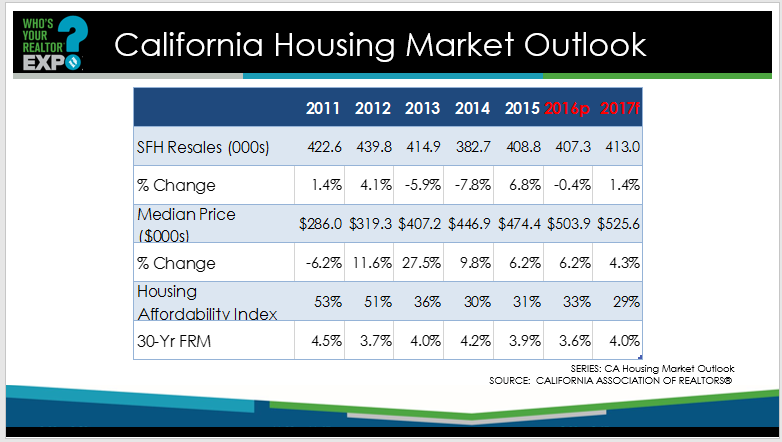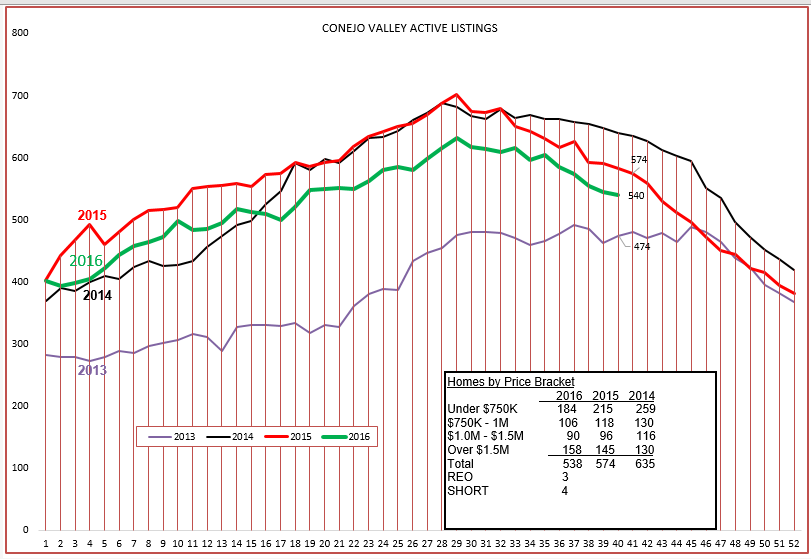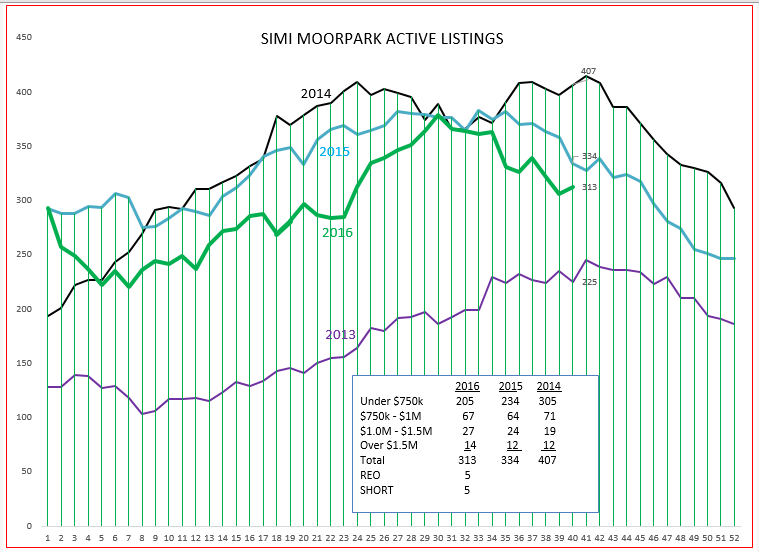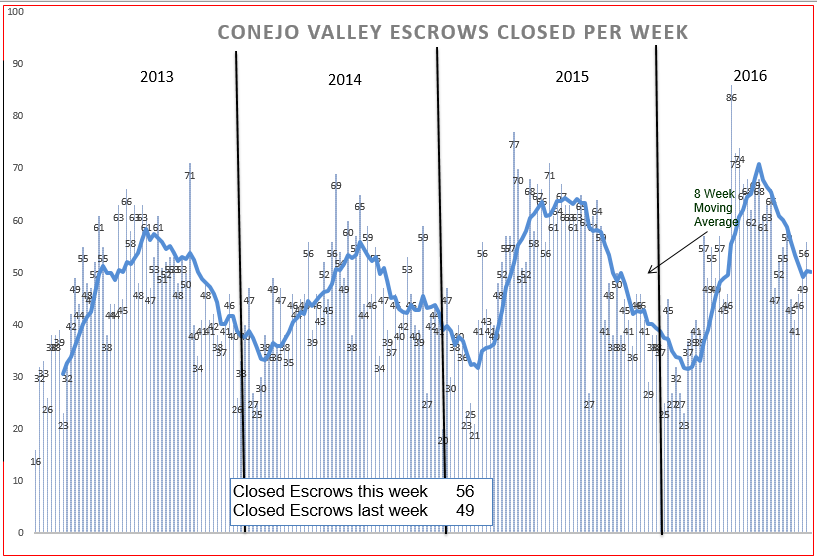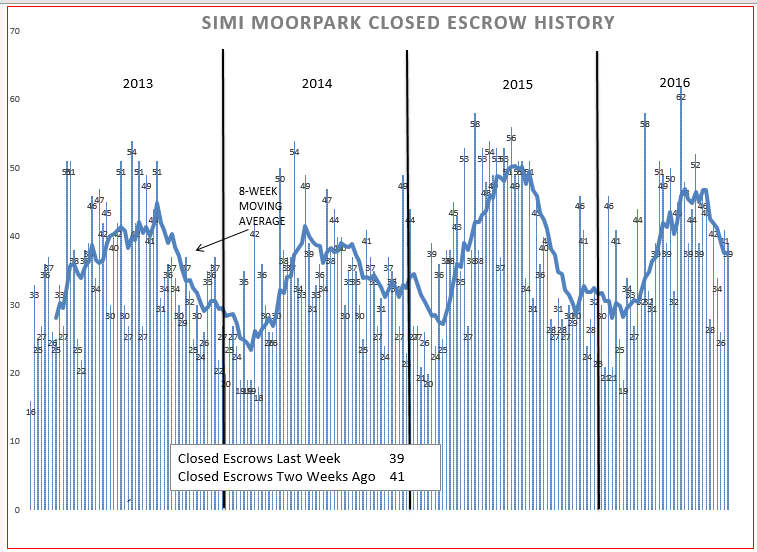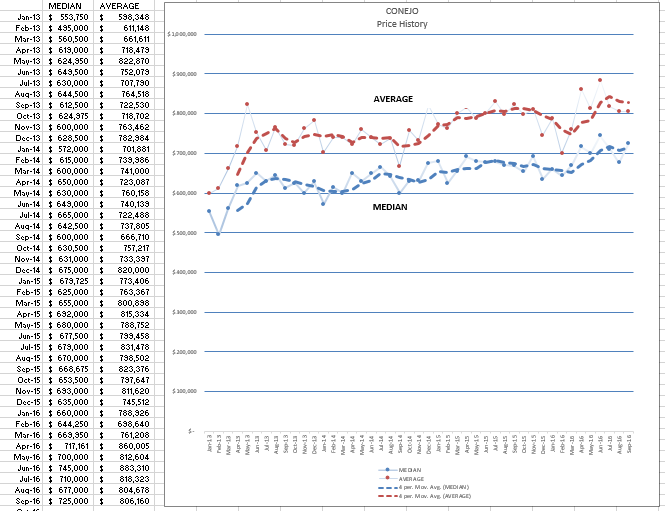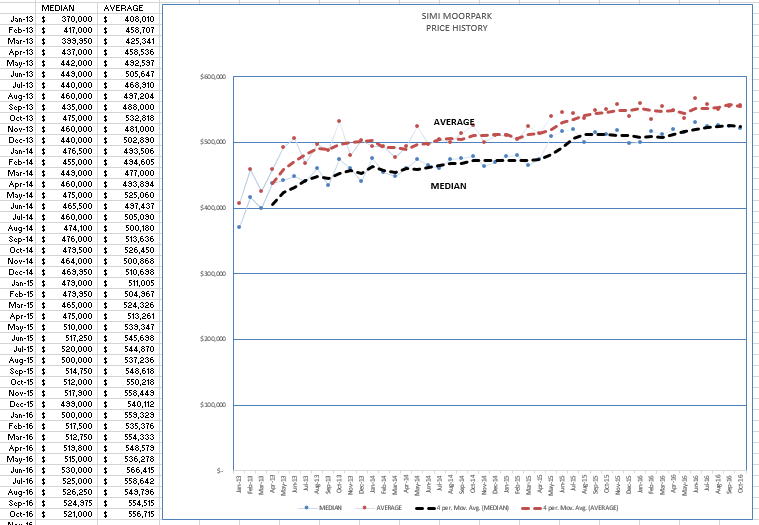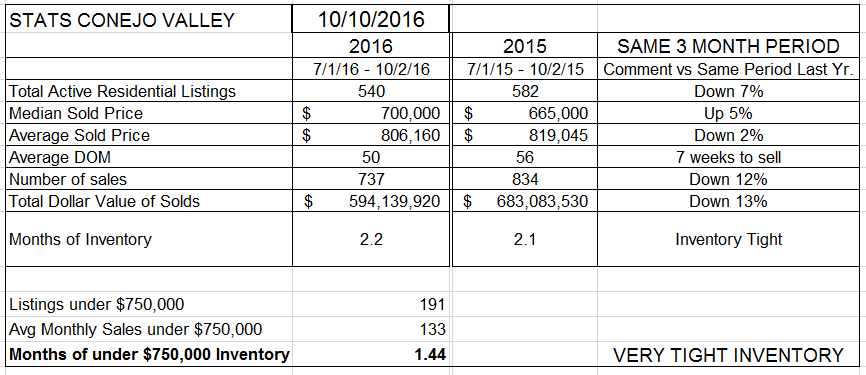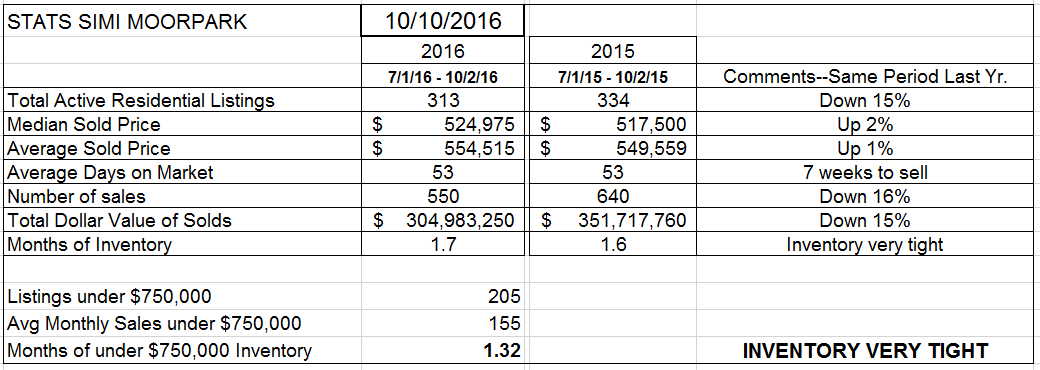Inventory is scarce, only two months worth of sales. Conventional wisdom previously called that a sellers market, with prices going up strongly. A bubble.
In our recent past, we characterized a balanced market, a normal inventory, as 6 months worth of sales. Now we are dealing with an inventory of less than 3 months. In the past, that level of inventory would dictate strong price increases. Now, not so much.
Last week, Dilbeck hosted Leslie Appleton-Young, C.A.R.’s very capable chief economist, to present her 2017 California real estate forecast. Her forecast is now available on the C.A.R. website, but hearing her commentary was much more interesting than just reading through it. She described the current inventory of 3 months as “The New Normal”. I believe she is correct, for California. Our local new normal may even be a little lower.
One definition of a balanced market describes a balance between the negotiating strength of the buyer and the seller. A balanced market has choices of properties available for buyers to purchase, and numerous buyers interested in purchasing a seller’s property.
We will look at the statistics for our valleys shortly, but first, let’s look at the 2017 forecast from Leslie Appleton-Young. Every year, I quote my predecessor, Millie Gordon, advising us to listen to what Leslie tells us. We are constantly given the opportunity to sound like a real estate expert when asked the question “So, what is happening in the real estate market?” Millie’s advice is to say, “Last week, C.A.R.’s chief economist, Leslie Appleton-Young, said this……” This is a much better approach to answering that question, and then you can add “Of course, all real estate is local. Some area pricing can move higher or lower even compared to nearby housing areas. Where do you live? I would be happy to send you information on how your particular area is doing.”
First, let’s look at Leslie’s forecast.
Leslie forecasts the median prices in California to increase by 4.3%, and the 30-year Fixed Rate Mortgage to increase slightly to 4.0%. The number of homes sold will increase 1.4%, but that figure is more important to realtors than it is to individual homeowners.
Perhaps the most interesting section of the figures above is the % change in median price from 2012 through 2014, a total of 49% without compounding. What does not show is the drastic decrease in 2008-2010. Most areas have “made up” the price drops, although prices escalated much too rapidly from 2002-2007, the Bubble Years.
We currently do not have a real estate bubble, and that is a very good thing. Recently, prices have been increasing in line with other inflation figures, and should continue to do so.
Now let’s talk about our little part of California. First, how does our inventory compare to our recent past history?
The 2016 graph is right in step with the 2015 experience, a normal year, or what Leslie calls a new-normal year. REOs and Short Sales are less than 2% of total listings. For the Conejo Valley, the “sweet spot” of desired home pricing is around $800,000, that is the highest demand area. Higher priced homes are remaining on the market longer and that inventory has been growing.
The lines in Simi Valley/Moorpark are a little more jagged, a little less consistency week-to-week. Although the yearly graph plots are not dead ringers for each other, there is some consistency in the inventory decreasing at the beginning of the year, rising in the summer and early spring, and then decreasing as the year ends. Rather than a smooth transition, it is more Mr. Toad’s Wild Ride. The “sweet spot” of this inventory is $525,000, where most of the sales are taking place.
Sales remain strong in the Conejo Valley, after a slow start at the beginning of the year. However, the number of sales over the last three months is down 10% versus the same three months of last year.
Sales in Simi/Moorpark never reached the lofty heights of 2015, and are 16% lower than the comparable three months of 2015. Considering how low the inventory is in Simi/Moorpark (below 2 months) the low inventory may actually be restricting the number of sales. However, if that were the fact, one would think prices would be increasing strongly. They have not, up only 2% compared to the same three months of 2015. It is, as Leslie described, the New Normal.
The pricing history in the Conejo Valley shows the same seasonal trend we expect in the inventory chart. In 2015, the space differential between the average and median prices increased, indicating a higher percentage of very expensive homes. For 2016, the distance between the average and median lines is narrowing, just as the inventory of high end of homes has been growing. Sales are still taking place, but the percentage of the total is changing, fewer higher priced homes than last year.
For Simi/Moorpark, there is much less distance between the average and median lines, and the increase is reasonably consistent, without much seasonal difference.
Finally, the stat sheet for Conejo shows inventory down 7%, number of sales down 12%, the average price down 2%, and the only positive figure is the median sold price up 5%. Down, down, down. Anything to be concerned about? No, because 2015 was such a strong year. The market is good, but the higher priced section of the market is not as strong as it was last year. Inventory remains low, mortgage rates remain enticing to buyers, and there are no storm clouds I can see on the horizon. Again, no bubble.
The stat sheet for Simi/Moorpark shows inventory down 15%, number of sales down 16%, the median price up 2%, and the average price up 1%. My only concern here is that with such ridiculously low inventory, why aren’t prices higher? Certainly no bubble here.
So what to tell those folks that ask you “How is the market doing?”
Last week, C.A.R.’s chief economist, Leslie Appleton-Young, forecast was that prices would increase 4.3% next year. That’s for the state of California. If you give me your address, I will be glad to email you information on how your particular area has been doing.
Thanks to Leslie for helping us all look smarter and more professional. The rest is up to you.
Chuck
